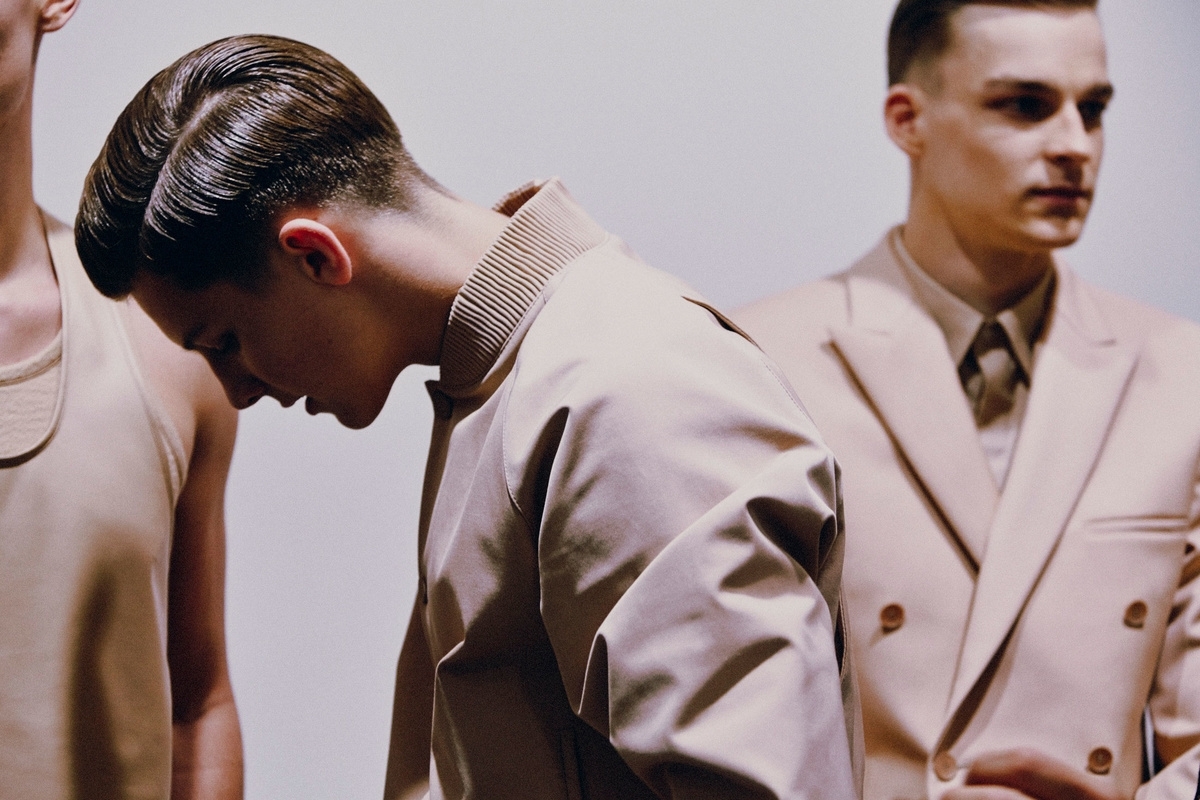In the latest fashion industry shake-up, yesterday the Calvin Klein corporation announced “a new global creative strategy for the company, which will unify all Calvin Klein brands under one creative vision.” The most considerable outcome so far? Its two designers, Francisco Costa (womenswear) and Italo Zucchelli (menswear) will leave the company after thirteen years at the helm of the Calvin Klein Collection runway lines, paving the way for a new designer to take over. And while I hesitate to feed a rumor mill that’s currently working longer hours in this industry than its famously overworked designers, all eyes are on Raf Simons. A declared Calvin Klein fan and currently a free agent, the timing of things is hardly a coincidence. When Simons left Dior last season citing too much work and too little time, he ignited a debate in fashion about the pressures put on designers and a fashion cycle in serious need of restructuring. If he becomes the new designer at Calvin Klein, he’s hardly going to take on the amount of work he endured at Dior. If he’s the new designers it’s because PVH — Calvin Klein’s owner, which also owns Tommy Hilfiger — will have allowed him to invent a more humane structure there, which could revolutionize the very nature of how the fashion system and its designers work.
Rumors aside, if we thought the suspense levels in fashion couldn’t get higher than they’ve been this past year, Calvin Klein’s announcement to part ways with Costa and Zucchelli after their thirteen-year residencies signifies a new agenda in the industry. Since late 2014, designers have gone and come at houses including Maison Margiela, Gucci, Balenciaga, Lanvin, Berluti, Brioni, and Saint Laurent. Presuming the choice to leave isn’t Costa and Zucchelli’s, Calvin Klein’s move is controversial in an industry where designers aren’t dismissed lightly. And yet it echoes what happened to Alber Elbaz last year when he was let go by Lanvin because he reportedly didn’t meet the expectations of its owner, Shaw-Lan Wang. It was an unexpected move, which many didn’t understand, simply for the reason that he hadn’t done anything wrong—i.e. nothing controversial, at least, in the vein of what happened with John Galliano at Dior. Costa and Zucchelli’s ten-plus tenures at Calvin Klein have been characterized by steady reviews and little loudness. But perhaps that was the problem? While Hedi Slimane was busy taking old Saint Laurent to new highs and John Galliano was making critics swoon at Maison Margiela, the Calvin Klein collections — albeit strong and more incredibly directional — couldn’t compete in the game of attention.
What’s more is the nostalgia that’s been surrounding the 90s’ idea of Calvin Klein — and especially the diffusion line, cK — for what seems like the past five years. All around the street style landscape, people who weren’t even born for most of the 90s have been wearing vintage cK t-shirts and daubing themselves in ck One, bringing back the heyday of Calvin Klein when Christy Turlington and Kate Moss would be looking frail and freckly in a black-and-white campaign. While the cK collections and campaigns of recent years were quick to embrace said nostalgia, it seemed all but ignored in the mainline collections until Zucchelli presented his perfume sweatshirts for fall/winter 14, with embroidery of the names of Calvin Klein’s various fragrances splashed across fronts. If there was a strong mood on the street towards a major Calvin Klein revival, it just wasn’t very reflected on the runways where Costa and Zucchelli were instead exploring much more complex references in collections that were no doubt beautiful but perhaps less accessible to an audience of the social media generation. In an interview in 2013, I asked Costa about his favorite Calvin Klein quote. (Klein sold the company to PVH in 2002 and left in 2003.) “‘We stand for being modern, contemporary, sophisticated, pure, natural and often minimal. Consistent’,” Costa quoted Klein. “‘And, we stand for sex in a very big way. We are a brand that can affect youth and people of any age’.” For the new designer at Calvin Klein that philosophy weighs heavier than ever.
Credits
Text Anders Christian Madsen
Photography Harry Carr, Calvin Klein Collection, spring/summer 15
